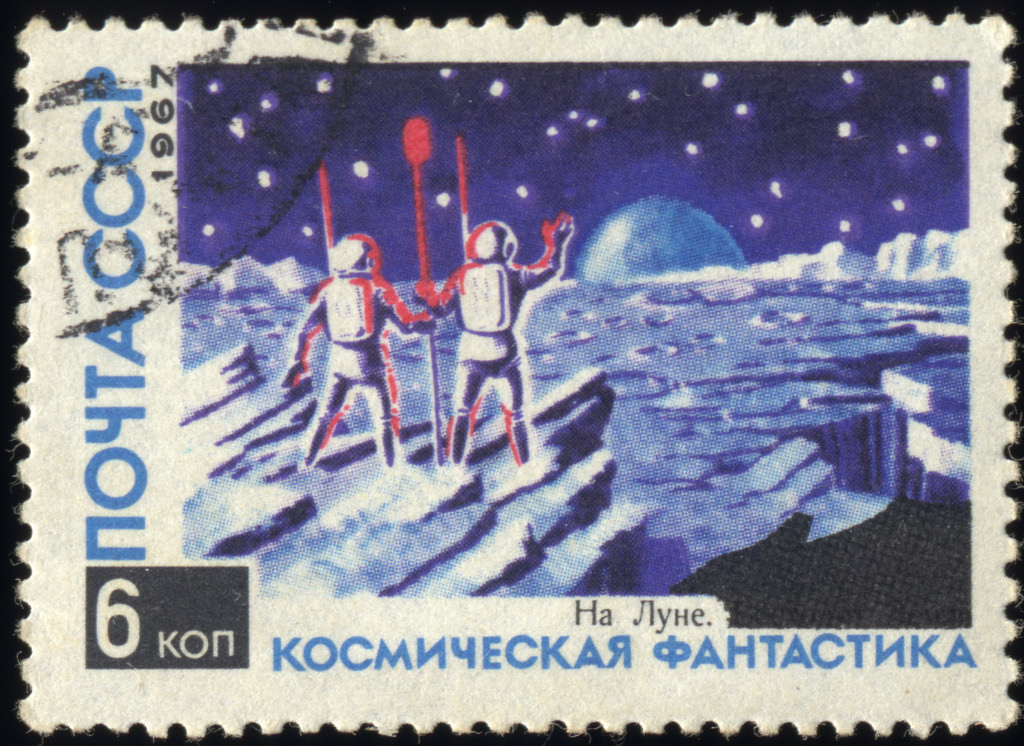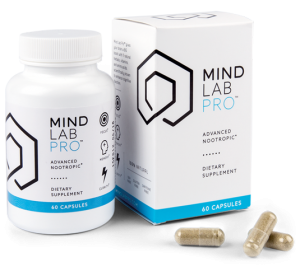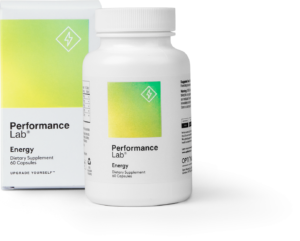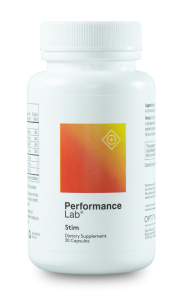Best Nootropics for Exercise: Summary
Once you’ve made the first step of stepping into the gym, you may better improve your exercise performance with nootropics that help boost focus, energy, motivation, and stress relief. Whereas stimulants synthetically boost performance, natural nootropics are better for long-term athletic health and function. Some of the best nootropics for exercise include Rhodiola rosea, L-tyrosine, caffeine + L-theanine, phosphatidylserine, ALCAR, and phenylpiracetam.
Only nerds take nootropics, I thought? And also: nerds don’t workout, right??
This may seem true, if you’ve reduced your entire worldview to 1980’s teen movies. For the most part, the whole nerd vs. jock dichotomy is fiction; or, at the least, it’s a dated cultural “clique” fiction that no longer applies to this day-and-age of bodybuilding Joe Rogan-type conversationalists.
Today’s “nerd” is an odd admixture of book-lover, weight-lifter, shroom-eater, and noot-taker. To attract a mate these days, it isn’t enough to simply bench press over 300 pounds anymore — you also need to have read Crime and Punishment while demonstrating the capacity for a good faith debate on Jungian principles as they apply to the hierarchical structures of modern society.
And guess what: nootropics may help with all of that. Because what helps the mind tends to also help the body, nootropics for cognitive performance may also double as nootropics for exercise performance. And that’s what I’ll be covering in this guide on nootropics for exercise. All you need to do is read it! (No crunches or sit-ups required!)
Page Contents
My Geek Guide on Nootropic Exercise Performance Enhancement
The first mental obstacle you need to overcome in working out is getting to the gym. Just show up. Walk through those doors, even if you’re walking in with an awful, amateurish workout regimen. It’s a cliché that applies to all creative endeavors: you start by starting.
I say this early in this article as it’s a common obstacle — often the primary obstacle — in achieving your health and fitness goals, especially if you’re just starting to hit the gym. I required the same advice to become a writer: “You’re a bad writer. Accept that, then move past that and write more to become a better writer.” And, well… I’m writing right now, so that’s something.
So, after that first step has been made, we can now look into the next problem: how can I better my physical performance? How can I “git gud”?
Because I’m primarily focusing on nootropics for exercise, I’ll be primarily covering the branched aspects of physical performance that relate to mental performance. However, if we’re to believe the “mind over matter” dictum favored by every high school coach in the world, developing a competent, disciplined mind is just as important as “showing up.”
And so, the mental performance markers that seem particularly pertinent to exercise performance include:
Energy and Stamina
Sufficient energy and sleep management is key to virtually all forms of human performance — whether athletic or cognitive, recreational or professional. While I understand and admire the go-getter “you need to sacrifice sleep and human comforts” attitude towards success, I also call bullshit — and so did Jeff Bezos when he said, “Eight hours of sleep makes a big difference for me, and I try hard to make that a priority.”
However, when athletes and exercisers turn to energy boosters for better exercise stamina, they often go the cheap, synthetic, stimulant route. They go with caffeine. And, sure, there are exercise benefits to caffeine, which is why I’ve listed it below as a “Nootropic for Exercise” — albeit paired with the calming, anxiolytic nootropic L-theanine. But if athletes want to genuinely improve their long-term physical performance, they should instead seek nootropics that boost cellular energy (e.g., ATP), rather than cheap synthetics that simply flush the brain with synthetic stimulation.
Stim-free energy boosters improve the brain and body’s natural energy production levels, improving both pre-workout stamina and post-workout recovery. Not to mention that these types of energy boosters may also come with metabolic improvements for the fat-trimming exercisers.
More on Nootropics for Energy.
Focus and Attention
Energy fuels focus. Low energy contributes to inattention, making it harder for you to not only focus on the goals and steps assigned to your workout regiment but to ignore the ever-present distractions that pull you away from a great workout.
Exercisers dedicated to competitive athletics may view focus and attention as the goals of exercise in and of themselves. For example, the practicing golfer seeks to not only improve his golf form but bolster his mental barriers against any peripheral distraction that may deter his focus on getting that tiny ball into that tiny hole hundreds of yards away. (Golf is borderline miraculous when you think about it.) The same may be said of any other sport that involves mentally juggling rules and strategy while physically operating within those limits.
Working out requires focus. But also working out sharpens focus. And by taking nootropics that assist with the physiological factors involved in focus, exercisers may better maintain cognitive clarity.
More on Nootropics for Attention.

Mood and Motivation
Even the most veteran exercisers falter due to poor mood and motivation. Following the initial rush of seeing positive fitness results around the 3- to 6-week mark, a weirdly destructive mental state may kick in; one that oscillates between boredom and anxiety. (At least, I’ve personally experienced this as the routine of exercise starts to drag.) Sustaining positive mood and motivation is key to sustaining positive exercise results.
Everyone hits a plateau after awhile, even if they’re showing up everyday to get their lift on. This is because after awhile, exercisers may simply go through the motions of exercising rather than pushing their workouts to the limits.
Dedication, consistency, persistence — yes, there are plenty of psychological factors involved in maintaining positive motivation. However, there are also neurochemical factors to mood and motivation, and adding certain nootropics to your daily routine may help bolster an eager, excited mindset.
More on Nootropics for Motivation.
Stress Resistance
Healthy exercise creates healthy levels of stress, just enough to challenge the body to fortify and grow. One interpretation of exercise that I like defines modern exercise as a simulation of the body’s fight-or-flight response that we rarely physically engage in our cushy lives. A complete lack of the physical fight-or-flight activation leads to physical deterioration and atrophy. We need some stress to grow.
However, too much stress, whether psychological or physical, may also contribute to deterioration and atrophy. Incredibly driven bodybuilders, such as Ronnie Coleman and Arnold Schwarzenegger, seem to have “bigger eyes than their bodies,” so to speak — no matter how immensely large their bodies get, they push their bodies harder to achieve their idea of physical perfection. The two forms of bodily stress that arises from increased exercise include:
- Stress hormone cortisol – released via the adrenal glands, cortisol has a catabolic (muscle deteriorating) effect under excess circumstances.
- Oxidative stress – free radicals that “age” the brain and body, increasing natural age-related deterioration.
Supplementing nootropics that help regulate cortisol and oxidative stress may reduce the detrimental byproducts of intense exercise.
More on Nootropics for Stress Resistance.
The Nootropic Mind-Body Connection

I often describe neurotransmitters as “brain chemicals”; however, healthy neurotransmitter expression plays a key role in healthy physical activity. And guess what: nootropics may improve neurotransmitter activity, thereby improving physical performance. The particular neurotransmitter “mind-body” connections of interest here include:
The Cholinergic Connection
Related to all things choline, the cholinergic pathway typically refers to neurotransmitter acetylcholine, which has been associated with memory, learning, and high-order cognitive processes. A decrease in acetylcholine expression usually signifies a decrease in general cognition. Cholinergic nootropics may improve the cholinergic system by:
- Supplying raw choline material for acetylcholine synthesis.
- Inhibiting acetylcholine breakdown (via acetylcholinesterase).
- Increasing acetylcholine receptor sensitivity.
Due to the importance of acetylcholine to the neuromuscular junction (the connection site between a nerve and muscular tissue), cholinergic nootropics may double as ergogenic performance enhancers in a direct way that many other nootropic ingredients do not.
The Dopaminergic Connection
Referred to as the “pleasure” chemical, dopamine plays a key role in our ability to, well… feel pleasure. It’s our feel-good neurotransmitter that plays a key role in motivation — good and bad:
- The Good – healthy dopamine activity promotes healthy, active behavior.
- The Bad – unhealthy dopamine activity promotes “immediate gratification” driven behavior; e.g., taking drugs, eating Butterfingers, playing video games.
Not to say that the occasional drug or gaming sesh always indicates unhealthy dopamine activity. Yet, when the behavior borders on addiction, you know things are off. On that note, however, hitting the gym daily may become its own feel-good rush, which we may attribute to dopamine. Maintaining healthy dopamine activity through healthy habits — including nootropics! — may help keep your motivation directed towards the gym and not Pizza Hut.
The Serotonergic Connection
Dopamine isn’t the only neurochemical involved in healthy behavior and motivations. Serotonin, our “well-being” brain chemical, also plays a key role in inhibiting impulsive behaviors. Low serotonin correlates with low inhibition of impulsivity, reducing our ability to visualize the long-term benefits of exercise.
Committing to a long-term exercise program requires belief in a long-term payoff. It’s a matter of dedication and self-sacrifice, largely in the form of sacrificing immediately gratifying activities. When you think about it, it’s incredibly strange the self-inflicted misery we place on ourselves when we procrastinate our goals; when we skip the workout for a day-long Overwatch session. (I emphasize Overwatch because I have the game staring at me on my computer at all times as I try to instead focus on my main passion: writing.) The only person we can blame is ourselves, and that’s perhaps the worst part about submitting to immediate gratification.
When we give into impulsive behaviors, we don’t feel well in the long run; our “well-being” is off. Serotonin imbalance represents the neurochemical aspect of this.
Benefits of Nootropics for Exercise
I emphasize the importance of brain chemicals to physical performance; however, neurotransmitters aren’t the only aspects of the brain that play a role in exercise performance. Brain chemicals, brainwaves, energy production — many other nootropic benefits may improve your workout results. Altogether, taking nootropics for exercise may help improve:
- Cognitive clarity and focus
- Mood and motivation
- Impulse control
- Muscular and energy stamina
- Antioxidant “anti-aging” protection
- Anabolic (muscle-building) stress levels
And more. Similar to other performance enhancing avenues, there are illicit and natural means to improving performance. For the most part, I prefer the natural nootropic path to better workouts. (E.g., you won’t see me popping Adderall for an intensely focused workout.) However, I have included a “bonus” synthetic cognitive enhancer below that’s a great nootropic for exercise.
Best Nootropics for Exercise in 2023
Rhodiola Rosea

Here’s what’s cool about listing Rhodiola Rosea here: I often recommend this powerful herbal adaptogen for cognitive performance, yet I primarily take this herb for its physical benefits. And I can certainly tell the difference between a workout in which I take Rhodiola beforehand and one in which I do not. And this makes sense: during the USSR days, Soviet Olympians and bodybuilders viewed Rhodiola rosea as one of their “secret weapon” ingredients.
The adaptogen has such a reliable, remarkable resistance effect against stress and fatigue that the Soviets kept this herb a secret from their competitors on the other side of the Iron Curtain.
And that essentially covers Rhodiola’s benefits for exercise:
- Rhodiola increases resistance to fatigue, improving mental and physical stamina throughout a workout and workday.
- Rhodiola helps regulate stress hormone cortisol activity, reducing excessive cortisol responses to stress.
Especially when paired with Ginkgo Biloba, a circulatory enhancing herb of ancient value, Rhodiola seems to improve athletic performance — or, as one study put it, “[t]he combined herbal supplement of Rhodiola and Gingko could improve the endurance performance by increasing oxygen consumption and protecting against fatigue.”
N-Acetyl L-Tyrosine
I wish I knew about N-Acetyl L-Tyrosine during my sleep-deprived college days. As a natural precursor to catecholamine neurotransmitters (e.g., dopamine, norepinephrine, epinephrine), L-tyrosine plays a key role in keeping the brain alert and active, making supplementary L-tyrosine work as a sort of mood and motivation booster.
In the early morning, following a late night, L-tyrosines feels like a mental lift, releasing the brain fog and grog that otherwise accompanies mental fatigue and stress. Under conditions of heavy stress and activity, the brain burns L-tyrosine, contributing to catecholamine depletion and brain burnout.
With that in mind, N-acetyl L-tyrosine may double as a pre-workout and post-workout nootropic compound by improving:
- Mental activity and clear-headed motivation prior to a workout.
- Catecholamine replenishment following an intense workout.
Because B vitamins play a key role in catecholamine conversion and synthesis, stacking NALT with B vitamins seems a smart idea to get the most out of this anti-stress amino. However, bear in mind that if you’re well-rested and stress-free, this nootropic won’t do much for you. (Which is perhaps a sign that you need to step it up with your workout!)
Caffeine + L-Theanine

This doesn’t necessarily have to be caffeine. For example, methylliberine, another caffeine-like stimulant, is on the up and up in pre-workout supplements, usually stacked with caffeine and another caffeine-like compound: theacrine. Regardless, while I don’t qualify stimulants as genuine brain healthy nootropics, pairing a stimulant (e.g., caffeine) with L-theanine may significantly take off the jittery “edge” to the stimulation, leaving the energy and focus benefits.
I recently picked up a newer pre-workout supplement that’s stimulant-heavy, supplying two of the stimulants listed above (caffeine and methylliberine) in addition to another heart-racing “fat burner” stim. The first serving nearly sent my heart flying out of my chest. My next workout, I modulated the serving by reducing it to 3/4 the usual scoop size and — you guessed it — I added a significant dosage of L-theanine. And the focus benefits became a near 10/10 for me.
Not everyone’s into caffeine. Usually, if given the option, I’ll choose the non-caffeinated version of a pre-workout formula. If not, I’ll pair the formula with an additional source of L-theanine. And for cognitive demanding athletic tasks, the caffeine + L-theanine combo may offer significant attention-related boosts on cognitive performance.
More on Caffeine + L-Theanine.
Phosphatidylserine
The benefits of phosphatidylserine supplementation are immense. As a key phospholipid involved in the double bilayer cell membrane, phosphatidylserine plays an important role in neuronal structure and health. For general brain health, PS assists with the following cognitive pathways:
- Cell-to-cell communication
- Brain energy metabolism
- Neuron detoxification
And perhaps the most relevant benefit to this article: post-exercise stress regulation.
One small, placebo-controlled study on phosphatidylserine’s anti-stress effects found that phosphatidylserine supplementation helped counteract the stress hormone cortisol response to physical exercise without also affecting growth hormone expression (which shares a common hormonal pathway with cortisol release).
I view phosphatidylserine as a great nootropic compound to supplement for daily, long-term brain health. I’m not surprised to see that this key phospholipid may also possess exercise benefits, even among healthy users.
Acetyl-L-Carnitine
Here is the theorized bio-mechanisms behind Acetyl-L-Carnitine’s (ALCAR) antioxidant energy metabolism benefits:
- ALCAR helps transport fatty acid fuel to mitochondria for energy production.
- ALCAR flushes toxic byproducts of mitochondrial metabolism.
So, essentially ALCAR helps turn fat into energy?
That’s the almost too-good-to-be-true theory behind this antioxidant amino. Honestly, it’s hard to say how effective this nootropic is on the fat-burning scale, with some evidence suggesting that L-carnitine L-tartrate might be better suited for fat burning. However, if you stack this antioxidant with other mitochondrial energy boosting antioxidants (e.g., Alpha Lipoic Acid, PQQ, CoQ10), the net result seems to be better energy production and neuroprotection on a cellular energy scale — rather than on the stimulant energy scale.
Especially as we age, such antioxidant energy boosters seem to only increase in their antioxidant, anti-aging, pro-energy value.
Phenylpiracetam
Viewed as the “supercharged” form of piracetam, phenylpiracetam essentially delivers the same cognitive enhancing benefits as piracetam except to a much greater, quicker degree. Whereas piracetam requires a couple weeks of supplementation to reach mild, peak effect, phenylpiracetam may be felt upon first administration.
And phenylpiracetam feels good, qualifying the drug as a stimulant — so stimulating in fact that the World Anti-Doping Agency banned this bad boy for competition.
Fortunately (or unfortunately?), I’m not a competitive athlete. I reserve my phenylpiracetam use for recreational weightlifting, and only occasionally so. While phenylpiracetam’s psychostimulatory benefits are great for obtaining good focus, mood, and motivation to cruise through an intense workout, the effects quickly wear off with frequent use. Tolerance build-up is a beezy with this racetam, so I only use phenylpiracetam roughly three times per week.
On that note, pairing phenylpiracetam with a nootropic choline source — such as, say, citicoline — may help alleviate any accompanying headache that sometimes comes with racetam use.
Best Nootropic Supplements for Exercise in 2023
If we could achieve an awesome workout on only a single ingredient, we’d all likely jack up our caffeine intake and call it a day. However, pre-workout supplements know that there’s more to enhanced exercise performance than simply supplying a heavy dose of a cheap-O stimulant. (Or at least good pre-workout supplements know this.) Below I’ve compiled a short list of nootropic supplement stacks and nootropic PWO hybrids that may help with your exercise performance with their smart mix of smart ingredients. Enjoy.
Mind Lab Pro
 Of the ingredients listed above, Mind Lab Pro supplies four: Rhodiola rosea, N-Acetyl L-Tyrosine, L-Theanine, and Phosphatidylserine — in addition to many more awesome nootropics. Another ergogenic compound found in this formula includes Citicoline, which supplies raw choline for a better cholinergic “mind-body” connection as I described above.
Of the ingredients listed above, Mind Lab Pro supplies four: Rhodiola rosea, N-Acetyl L-Tyrosine, L-Theanine, and Phosphatidylserine — in addition to many more awesome nootropics. Another ergogenic compound found in this formula includes Citicoline, which supplies raw choline for a better cholinergic “mind-body” connection as I described above.
As a brain health supplement, Mind Lab Pro is one of the best when it comes to nootropic diversity and quality. The benefits of this stack are great for all-around performance — be it mental or physical. Plus, by supplying L-theanine without caffeine (or any other stimulant for that matter), Mind Lab Pro may be a good stack addition to your caffeinated PWO of choice.
Want some? Buy Mind Lab Pro here.
Performance Lab Energy
 Speaking of non-stimulant nootropic stacks: Performance Lab Energy does what many energy booster stacks do not, which is boost energy. As in actual cellular, mitochondrial energy. The real-deal stuff that fuels your brain and muscles, rather than cheaply stimulating them for a temporary period of time (that usually follows with a crash).
Speaking of non-stimulant nootropic stacks: Performance Lab Energy does what many energy booster stacks do not, which is boost energy. As in actual cellular, mitochondrial energy. The real-deal stuff that fuels your brain and muscles, rather than cheaply stimulating them for a temporary period of time (that usually follows with a crash).
It’s a smart antioxidant energy booster stack that supplies the following ingredients:
- Acetyl-L-Carnitine (ALCAR)
- R-Lipoic Acid (as Microencapsulated Bio-Enhanced®)
- Coenzyme Q10 (as MicroActive® Q10)
- PQQ (as BioPQQ®)
And not to mention the always wonderful BioPerine® black pepper extract, which supplies the bio-active piperine, a spicy constituent that enhances nutrient absorption.
Similar to Mind Lab Pro, Performance Lab Energy takes the healthy nootropic route to all-around better performance, supplying all of its ingredients only in their highest quality forms.
Want some? Buy Performance Lab Energy here.
Read my in-depth review on Performance Lab Energy.
Performance Lab Stim
 Here’s a stim-powered nootropic stack: Performance Lab Stim works as a sort of Caffeine 2.0 pill, thanks to this unique formula’s mix of caffeine with nootropic amino acids and B-vitamins. By pairing a modest “scalable” dose of caffeine (50 mg) with 100 mg of L-theanine, an anxiolytic amino acid that synergizes with caffeine for a cleaner, smoother stim rush, Performance Lab Stim enhances exercise performance without the jittery side effects.
Here’s a stim-powered nootropic stack: Performance Lab Stim works as a sort of Caffeine 2.0 pill, thanks to this unique formula’s mix of caffeine with nootropic amino acids and B-vitamins. By pairing a modest “scalable” dose of caffeine (50 mg) with 100 mg of L-theanine, an anxiolytic amino acid that synergizes with caffeine for a cleaner, smoother stim rush, Performance Lab Stim enhances exercise performance without the jittery side effects.
Additionally, Performance Lab Stim’s L-Tyrosine + B-Vitamin Complex boost and preserve your catecholamine levels, simultaneously enhancing mental alertness while reducing the “brain drain” typically associated with caffeine. Taken in a pre-workout context, Performance Lab Stim is an incredibly valuable source of mental energy and even thermogenic calorie expenditure.
Want some? Buy Performance Lab Stim here.
Conclusion
I don’t fully believe in the divide between mind and body. What ails the mind ails the body (and vice versa). Take, for instance, the fact that the gut is lined with serotonin receptors — this is why the gut’s nervous system has been nicknamed the “Second Brain.”
And that’s why I also view nootropics not only as cognitive enhancers but physical performance enhancers as well.
Fortunately, the new nerds of today have expanded their geekiness into the physical realm, taking a more holistic approach to their health. With that in mind, nootropics may not only enhance physical performance but physical performance may help optimize cognitive health and longevity. If you don’t use it, you’ll lose it. And, unfortunately, as is the case with exercise, if you don’t stay active, you’ll lose damn near everything.
So, like, get off your ass and walk up some stairs, or something.
Read my Best Pre-Made Nootropic Supplements list here.


